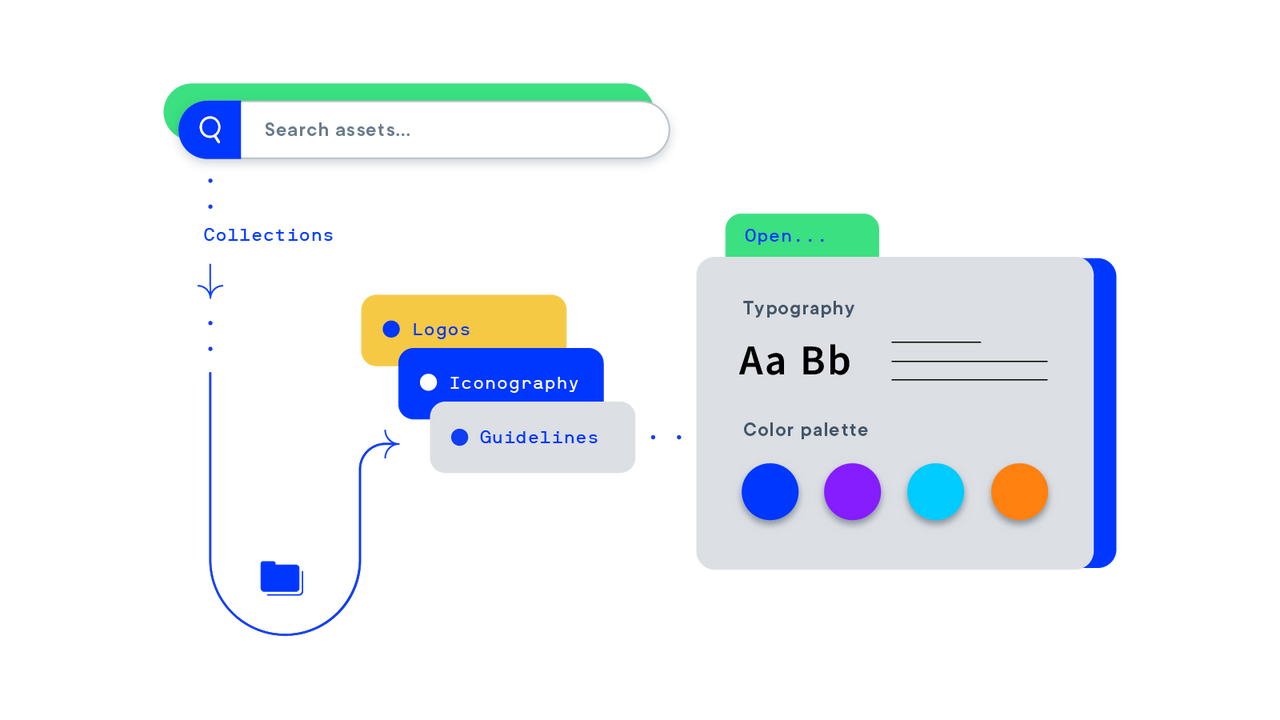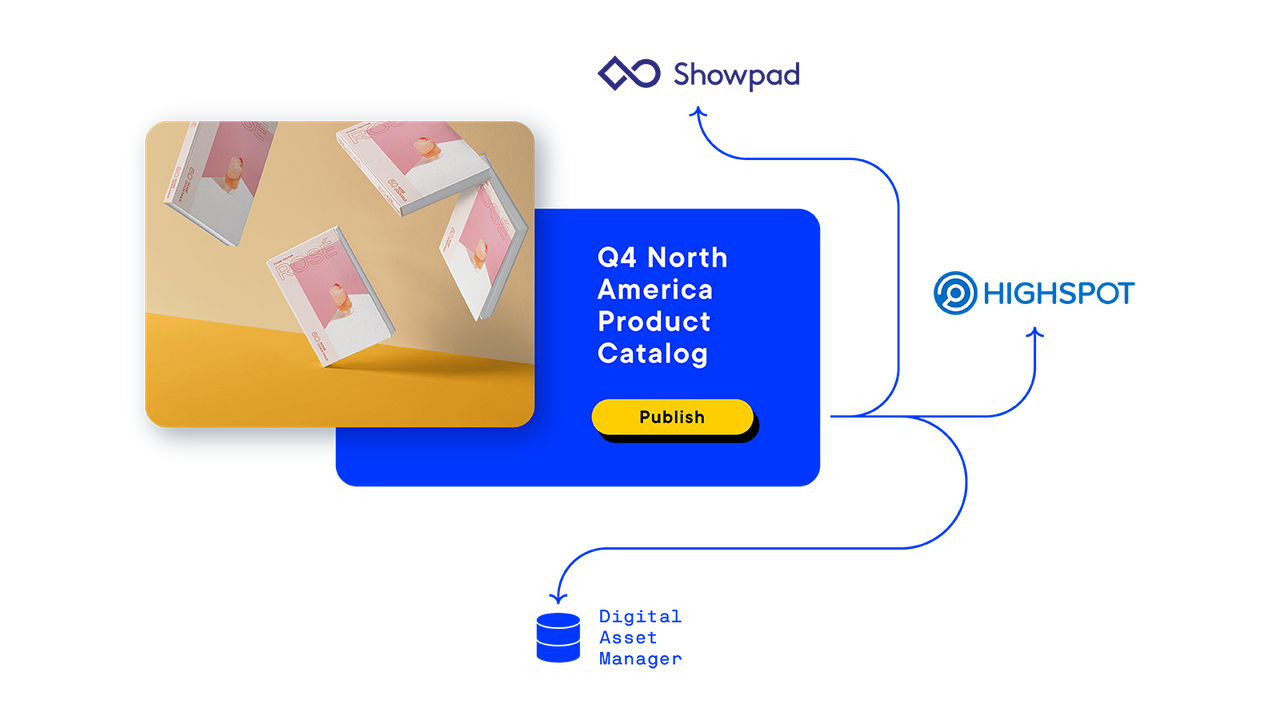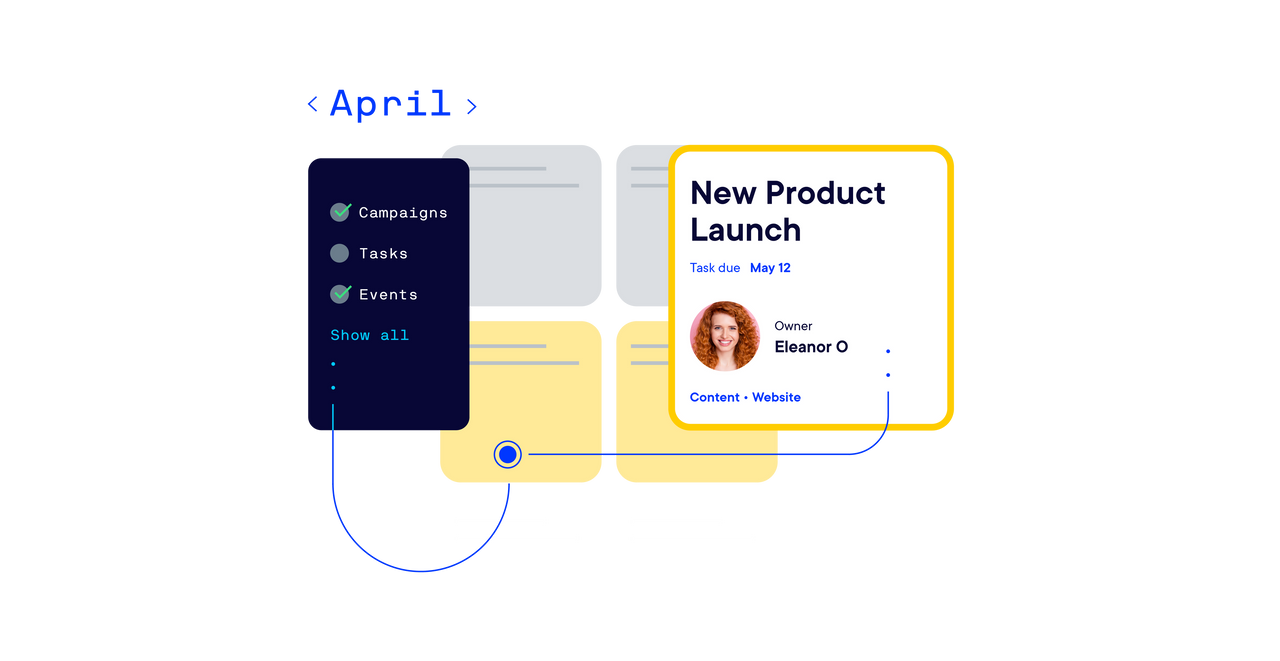Marketing strategy template for any size marketing team
Create a marketing strategy template to streamline your marketing efforts without sacrificing consistency. Learn how below.

Your integrated marketing efforts won’t go far without a solid strategy and plan. A marketing strategy template is a roadmap that explains your marketing plan to the stakeholders in your organization.
We'll show you how to do it, so let’s get started.
What is a marketing strategy?
Creating a meaningful marketing strategy requires a proper template. A template should center your focus on that strategy.
Keep in mind that a marketing strategy differs from a marketing plan.
How is a marketing strategy different from a marketing plan?
A marketing strategy is a blueprint that marketing teams use to create and execute their marketing plans.
Marketing plans, on the other hand, consist of actionable marketing activities like content marketing and social marketing efforts, among a slew of specific initiatives including marketing campaigns, blog posts, big-rock content releases, influencer marketing, and a vast array of other marketing tactics.
Why do you need both a marketing strategy and a marketing plan?
Businesses need a documented marketing strategy and a measurable marketing plan to create a marketing roadmap, set smart goals, and follow them through to the finish line.
Every company has unique needs, goals and personnel. But how do you decide which performance indicators to prioritize and appropriately pivot if the analytics say you should?
That’s all part of your marketing strategy and the marketing plan that goes with it.
Building a marketing plan template
The best way to do it is to include key, high-level sections that your marketing team will follow when they plan out their marketing strategies.
An effective marketing plan template will include the following:
Executive Summary
An executive summary is a good thing to include in any marketing plan. It ensures everyone inside your organization and beyond is on the same page.
The executive summary may include some or all of the following:
- Business name
- Location
- Company mission statement
- Company history
- Advisors and team members
- Pricing breakdown
- Marketing plan description
Business Information
Include any relevant business information early in your marketing plan template. This encompasses a mission statement, headquarters and marketing team.
Marketing Goals
Before spending valuable time, money and other resources on marketing, you need to know your goals.
Some of the most common marketing goals (and business goals) include:
- Drive more visits or web traffic
- Increase sales
- Generate more leads
- Boost brand awareness
- Strengthen brand affinity
- Retain customer base
Your goal shouldn’t be just to “get more leads” — it should be to get more leads that are actually interested in your offer. Set SMART goals: marketing goals that are specific, measurable, achievable, relevant, and time-framed.
Target Customers
Your marketing needs to be relevant to your target customer. Specifying demographic information like age, gender and income along with other data points like location and occupation should come first.
But it’s even more important to understand is the motivation people have to buy from your business.
Based on your target market research, you can then create a selection of buyer personas that represent your ideal customer.
Competitive Analyses
In today’s market landscape, you can be sure potential buyers are looking at you and your competition, every time.
When running a competitive analysis, you need to answer these questions:
- What is their product or offer?
- How is it different from yours?
- What is their brand’s positioning and messaging?
- Who is their target market?
- What differentiates them?
A competitor analysis can also give you insights into what marketing efforts and channels are worth trying out.
SWOT Analysis
Now is your chance to set yourself apart from the competition. You need a unique selling proposition (USP), which can be uncovered by a deep dive into your business.
We recommend following a SWOT analysis to guide your efforts and further marketing plans:
- S- Strengths. What do your customers love most about your business?
- W- Weaknesses. What are your company’s weak points?
- O- Opportunities. What new opportunities can you explore?
- T- Threats. Are there issues that are jeopardizing your future success?
Show why people should buy from your business instead of the competition that’s always just a click away.
Marketing Budget
A solid marketing strategy starts with a clear understanding of how much time and money you have to invest in marketing activities.
Marketing efforts like SEO, content planning initiatives, social posts, and newsletters are technically free, but they require serious time commitments.
When it comes to your marketing budget, get specific. Work out how much spend can be allocated to online tools, freelancers, and digital advertising, and how much you need to invest in each marketing channel to truly make it work for you and your marketing goals.
Branding voice, tone and identity

Creating a unique brand voice and visual language depends on user research, competitive analysis, executive summary and the overall strategy.
A consistent look and feel to your branding will help streamline and direct all your future efforts.
Ultimately, your tone and design aesthetic need to cater to your target demographic to convince them to engage with your brand and convert.
Marketing Funnels
A refresher on marketing funnels will help your marketers build a more suitable strategy. The stages of a funnel are:
- TOFU, the top of the funnel, or when your target market gains awareness of different products on the market.
- MOFU, the middle of the funnel, where they begin to research the products available.
- BOFU, the bottom of the funnel, when they decide to buy the product. It could be from you or your competitor.
Understanding the funnels allows you to pick the right messaging that addresses the buyer’s concerns and needs at every stage.
The Best Marketing Channel

Selecting the most relevant marketing channels for your specific efforts is a vital part of the process.
Here is a breakdown of some of the most important places you can connect with your customers:
- Website and blog. Create a place where customers can buy and interact with your products.
- Social media marketing. Make use of organic and paid social media content marketing to drive traffic and convert that traffic into sales.
- Email marketing. If you have a collection of emails, utilize them to drive up your ROI.
- SEO. With 3.5 billion searches on the internet daily, consider a way to drive commercial traffic to your website.
- YouTube is the second-largest search engine. Use it to grow your business with sponsored ads.
- PPC. Pay-per-click is more likely to convert with over 50% success.
Successful marketing relies on your audience seeing the right messaging at the right time — meaning when they’re at a specific phase of the sales funnel.
That cycle consists of:
- Awareness
- Consideration
- Purchase
Select metrics and KPIs
Developing a measurement framework is a necessary step to accurately judge the success of your marketing efforts. Start by defining your most important key performance indicators or metrics.
If conversion for your business happens online, it’s not so helpful to rely on metrics like “number of page views” or “ranking on Google,” since they don’t directly help your business.
Instead, use metrics that are directly tied to revenue or leads generated, like online sales, the number of phone calls received, etc.
Organize your marketing calendar

When you have a marketing strategy, use a calendar to track deadlines and progress. It can be especially helpful to track every task through its life span, so you can easily spot bottlenecks at each step.
